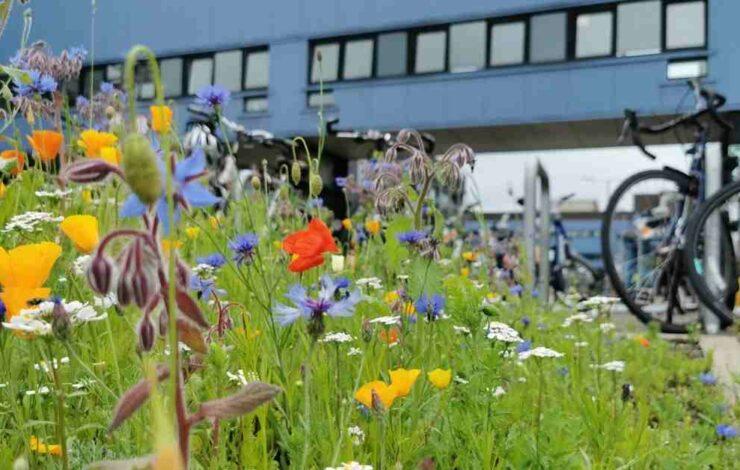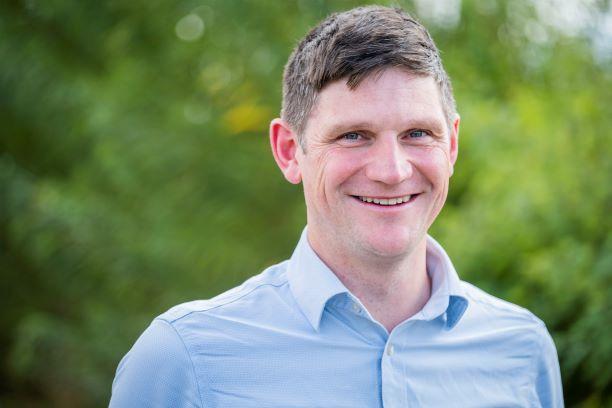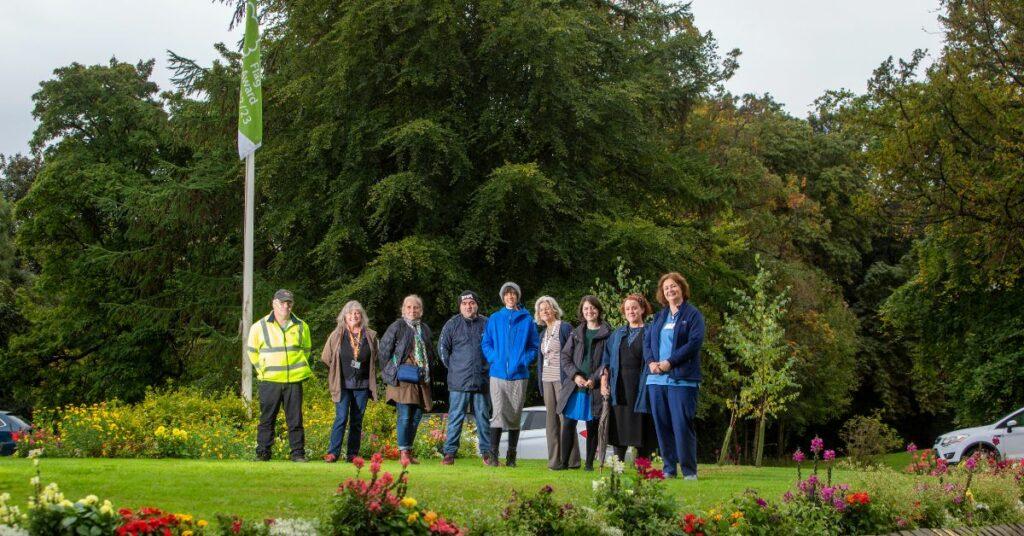October 24, 2022
Nurturing our natural health service
Tagged by

In 2019, I joined NHS Lothian as part of NHS Lothian Charity. The Charity’s mission is to enhance the lives and experiences of people who come into contact with the NHS. My mission is to achieve this through our Green Health programme, using our natural environment to improve health and wellbeing both for people and the planet.
‘Green’ healthcare is not a new concept, and the benefits of fresh air and contact with nature have long been intrinsically understood and experienced. You can see this from the landscaping of the grounds of the Astley Ainslie Hospital in the 1900s through to the biophilic design of the new Royal Hospital for Children and Young People. Many people have benefited from the opportunities to step outside of a busy hospital ward and take a deep breath. Over the past few years, this understanding and appreciation of connection with nature has deepened and sometimes this is now referred to as our natural health service.

My own story started when my daughter was born at the Royal Infirmary of Edinburgh. I spent a week wandering the woods of Little France Park adjacent to the hospital whilst we waited to go home. Each time I stepped outside I could feel my gaze stretching into the distance and a weight lifted off my shoulders. This led me to search out other people’s stories and understand their experiences of how that connection with nature helped them.
One striking example came from another patient at the Royal Infirmary. At just 23-years-old, Ria O’Hanlan found herself in hospital fighting for her life. The occupational therapy student went from experiencing back pain, to collapsing on the floor and being diagnosed with an aortic aneurism, her lungs filled with blood. She was placed in an induced coma and given antibiotics, which took some time to take effect. After coming out of the coma, and while lying in the Intensive Treatment Unit which has no natural light, Ria became disorientated. She had no sense of time, or even whether it was day or night. The game-changer came with a visit to the hospital garden, at the insistence of one of the nurses.
“At first I wasn’t keen on the idea because everyone in the ward was so busy, and I initially required a ventilator and nursing staff to help me,” she says. “But the garden was such a different environment. I was able to relax and switch off.
“Even just feeling the air, and the warmth of the sun, brought me back to myself and reminded me that I was not just a sick patient and that there was a world outside of the hospital.
Ria O’Hanlan“This made a world of difference”.
Ria’s story is powerful and motivating but it also hints at the challenges we face. She intuitively understood the barriers that the staff had to overcome to get her outdoors. On a busy ward with many competing demands, staff took the time to put Ria’s needs at the centre of her care, and they had the infrastructure in place to be able to do this. I am now working with staff and partners across NHS Lothian to make this a more common story.
The NHS Lothian estate is vast, with over 120 sites and 30,000 staff serving a population of over 900,000 people. So where do you start? There are two key assets we have at our disposal: our people and our land.

Across Lothian, our people form a community of health professionals, third sector organisations and volunteers who don’t need any convincing that green health is beneficial. They are the roots of our network and, just like the surrounding environment, need to be connected and nurtured. Within the family of NHS staff and our partners, there are experts in everything from garden design to butterfly identification. It is these people who will be the champions of green health and who will make Ria’s experience an everyday occurrence.
Our land is now being better recognised as a health and climate change asset. Last year I commissioned the first ever Biodiversity Audit and Climate Change assessment for a whole health board. For the first time, we were able to report on the area of greenspace and the benefits this is delivering. We now know that 46% of the 174 hectares of the NHS estate is greenspace, and the woodland and trees in this area sequester 282 tonnes of CO2 per year. From case studies gathered as part of this study, we also have a much better understanding of the economic and social benefits that the greenspace delivers and recommendations on how to maximise this in the future.
This brings me back to my mission; to use the natural environment to enhance the lives and experiences of people who come into contact with the NHS. We have the people, we have the land, but we need to unlock the capacity to make it happen. This capacity exists, it is out there, but we need to nurture our understanding of the situations others find themselves in, build relationships and find a shared purpose that improves lives and protects the planet for the health of future generations.
Thanks to Ria O’Hanlan for allowing me to share her story.

Ian Mackenzie
Green Health Programme Manager
Ian Mackenzie is passionate about connecting people and nature to improve health and tackle climate change. As the Green Health Programme Manger he is at the forefront of integrating biodiversity and nature into health care settings and systems. Building on a 20 year career in wildlife conservation, he has a reputation for developing partnerships and collaborations that bridge the gap between conservation and other sectors. Working for greenspace scotland, Scottish Wildlife Trust and Forrest Research he has created partnership and projects that benefit both people and planet.
Email: [email protected]

Connect to our network to learn and share
If you feel passionately about the benefits of nature and their potential in addressing health inequalities, join our Green Health Network. All you need are a few good ideas, a little time to spare and a willingness to be involved with promoting and supporting green health activities across the Lothians.